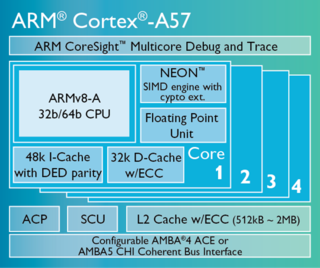Part 1 of 2
Over the last decade, the rise of ARM® Holdings in the chip industry has been nothing short of phenomenal. And the UK company doesn’t even sell chips! It sells its smarts; its intellectual property (IP).
Apparently, one of the next mountains ARM has set about to climb is the emerging 64-bit server market. But first, let’s recall where ARM came from before look at where it’s going. In Part 2 of this blog series, we’ll examine ARM’s impact on the emerging microserver marketplace.
Up from Embedded…
ARM traces its beginnings back to the embedded computing marketplace, which has evolved rapidly over the years. Some of the first embedded computer designs originated during the early 1960s in the defense industry. Through the evolution of the technology, markets became wide and varied. Today embedded computing is everywhere.
Over the years, many companies, including Intel, Zilog, Motorola, Hitachi, and others, have offered relatively generic, monolithic microprocessors and microcontrollers (processors with integrated peripherals) intended for embedded designs. As embedded markets have matured, the ARM architecture became the most prevalent in embedded applications.
How did ARM emerge as a world leader when the company primarily does not manufacture processors? ARM, like other emerging IP companies, provided innovative processing solutions at a time when demand for application-specific processor designs was increasing. Driven by manufacturing costs, high integration requirements, low power consumption and flexible microcontroller features, a truly revolutionary market disruption occurred.
System designers changed their approach from simply deploying a standard off-the-shelf processor to designing a system-on-a-chip (SoC) which would be central to embedded system designs. Because of this shift in system design, product differentiation was not only provided through software, but also through a combination of third-party chip IP as well as IP developed in house by the system suppliers themselves. Specifically, ARM provided innovative, low-power, inexpensive processor IP supported by a best-in-class ecosystem.
On to 64-bit…
ARM IP can currently be found in almost every form of embedded device. As mobile computing has skyrocketed, ARM has enjoyed design wins that have placed its IP in 90 percent of all cell phones and smartphones. Historically, ARM-based chips have been 32-bit devices which served the many varied embedded markets well. The company has introduced various versions of the ARM 32-bit architecture, beginning with ARMv1 through ARMv7. In October 2011 ARM announced its first 64-bit architecture, the ARMv8-A, or simply referred to as ARMv8 or AArch64.
Specific cores, including the Cortex-A53 and Cortex-A57 (Figure 1), were announced a year later. The new 64-bit architecture was not only a fundamental change from previous ARM IP offerings, but it opened up entirely new opportunities for ARM cores and the company’s licensees. Market segments such as mobile, automotive, industrial, medical, storage, defense and others could potentially benefit from a 64-bit offering.
In September 2014, ARM announced that it had achieved continued momentum behind ARMv8-A. At that time, ARM signed its fiftieth license agreement with some 27 companies. ARM reported that its IP was being designed into various vertical market segments, such as smartphones and tablets, servers, networking and consumer electronics. The mobile industry was first to ship devices designed with the ARM 64-bit architecture. Apple was the first company to ship an ARMv8-compatible chip in the iPhone 5S. Later Samsung introduced the Exynos 5433 as part of the Galaxy Note 4. Many longtime ARM mobile customers purchased 64-bit standard licenses or architectural licenses, which gave them greater design flexibility. ARM reported that its IP was present in all top 10 vendors for smartphone processors, nine of the top ten manufacturers of tablet chips, and four of the top five chips from the makers of consumer electronics. ARM added that four of the top five chip vendors for servers and networking gear as well as eight silicon makers in China also adopted its technology.
Check back with us soon for Part 2: Will ARM disrupt the server market? In the meantime, you might be interested in learning about our SourcePoint for ARM software debugger.



One Response
Hello,
The provided analysis is very good as well as I will apply the same practice on my profession